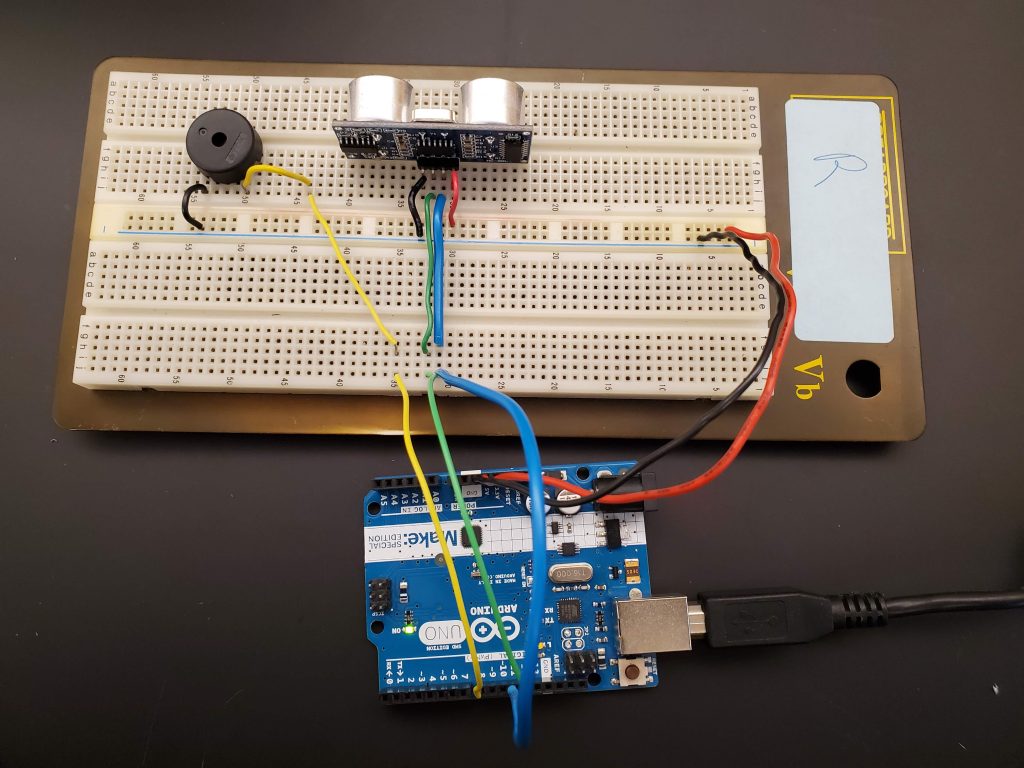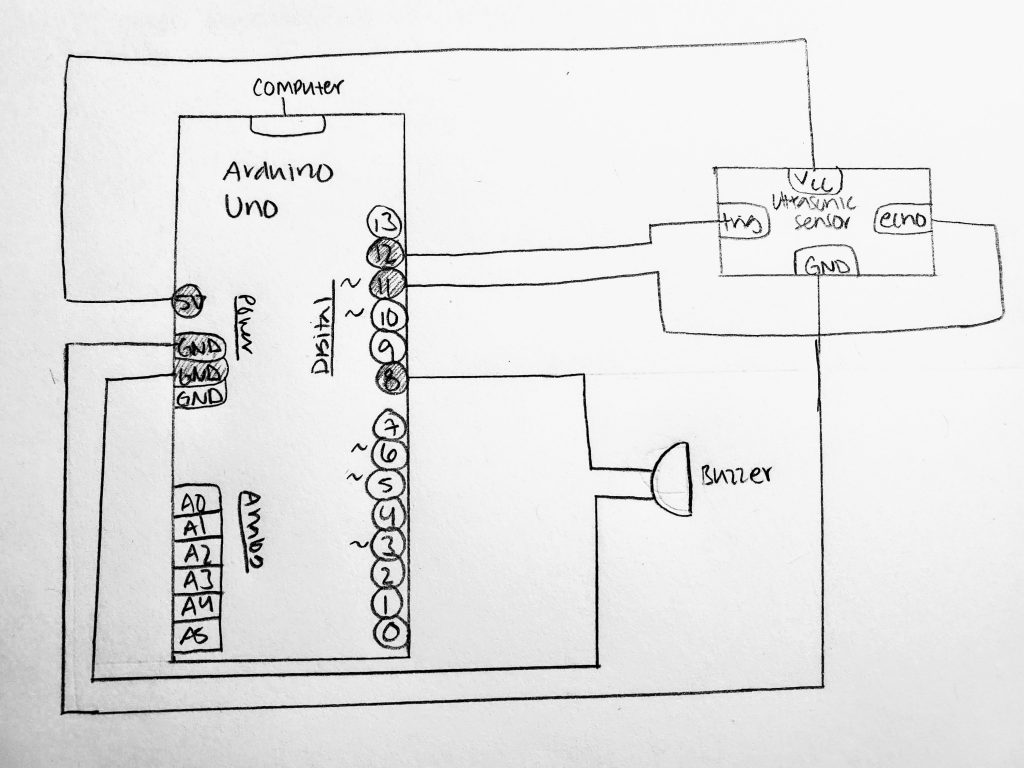Arduino Project

Credit: “Arduino Build” by Lisset Rojo Ramirez is licensed under CC BY-NC 4.0

Credit: “Circuit Diagram” by Lisset Rojo Ramirez is licensed under CC BY-NC 4.0
Contextualization
This project was part of the PHY 240 cours ein which we learned about Practical Electronics. My goals are to become a software engineer so I really wanted to know the functionality of electronics and how they work. Usually, I spend time learning about software but really wanted to dive deeper into hardware and mechanics. It prepared me to make a whole project using tools like coding that I love and really prepared me to develop a device that has the potential to solve a problem.
1. Describe the problem.
People with visual impairment struggle to get around by themselves without support. We suggest using Arduino to build a handheld toolkit with audio-wave sensors that will detect solid obstacles in front of the user. This toolkit will provide support for complete autonomy. By replacing natural visual sensors (eyes) with audio-wave sensors that detect obstacles users will be able to move around in their own environment in a safer way.
2. Describe your project. What will it do?
Our project will use audio-waves sensors, as the input, to detect solid obstacles that are near or in front of the user with visual impairment. With the audio-wave sensors, a sensor will send sound waves inaudible to the user. These waves will be reflected back if they hit a solid obstacle. Then, the reflected wave will become a signal indicating the presence of an obstacle. The sensors will then output (through a speaker which is our tool’s output) certain sounds of varying pitches depending on the distance between the user and the obstacle. This means that the higher the pitch, the closer the obstacle is from the user and the lower the pitch, the farther the obstacle is from the user. This is because the sound waves get longer as they move farther. The sensors will help alert the user so that they may change directions before colliding with the obstacle.